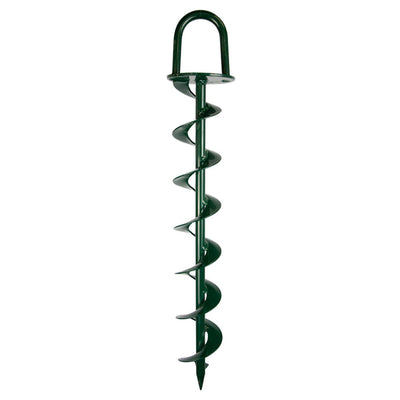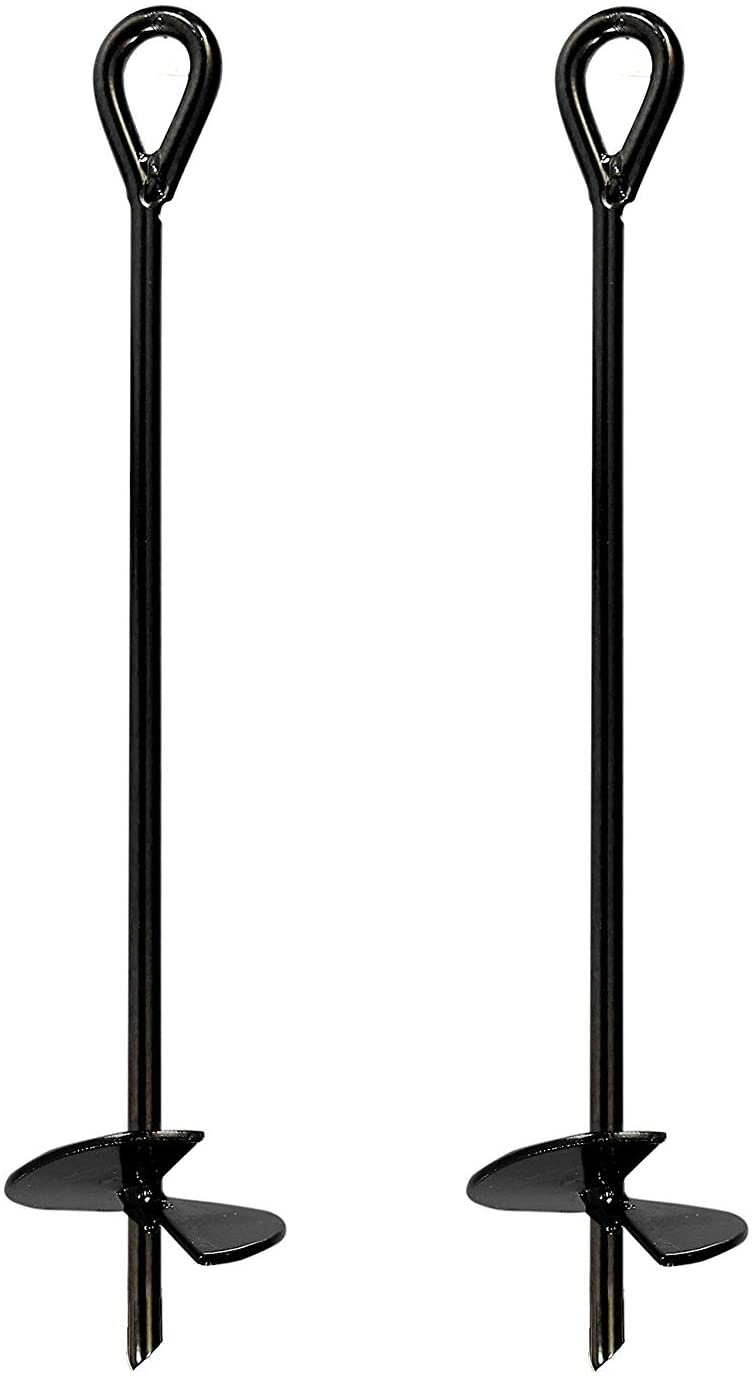An Easy-to-Follow List for Installing and Using a Ground Anchor
An Easy-to-Follow List for Installing and Using a Ground Anchor
Blog Article
Explore the Various Types of Ground Support for Your Following Project
From auger supports, which stand out in varied dirt conditions, to risk anchors made for momentary setups, the options are numerous. Furthermore, concrete and screw anchors existing special advantages in particular circumstances, while deadman anchors are customized for applications needing resistance to side forces.

Auger Anchors
Auger supports are a preferred option in various building and landscape design projects due to their unique design and effective securing abilities. These anchors consist of a helical screw-like shaft that is driven into the ground, permitting for a steady and safe and secure hold. The spiral design assists in easy setup and maximizes resistance against lateral forces, making auger anchors specifically effective in applications such as secure fencing, momentary frameworks, and disintegration control.
The installation procedure of auger anchors is relatively simple. They can be by hand or mechanically installed, depending upon the size and called for depth. This adaptability permits for their usage in varied soil problems, from sandy to clayey surfaces. Auger supports can be conveniently eliminated and recycled, which adds to their cost-effectiveness and sustainability.
Among the substantial benefits of auger supports is their capacity to distribute tons evenly throughout the bordering dirt, reducing the threat of soil disruption and reducing ecological influence. Additionally, they are much less susceptible to loosening or heaving with time compared to conventional securing techniques. Auger anchors are an exceptional choice for jobs calling for durable and trusted anchoring solutions.

Stake Anchors
When it involves safeguarding frameworks in a selection of outside applications, stake anchors use a trusted and simple remedy. These supports are normally built from durable materials such as steel or light weight aluminum, made to withstand ecological anxieties while providing optimal security. Their straightforward style permits fast installment, making them an optimal option for momentary or long-term anchoring needs.
Risk supports are particularly useful in safeguarding camping tents, covers, and other lightweight frameworks versus wind and weather. They work by being driven into the ground at an angle, producing a strong hold that stands up to pull-out pressures - Ground Anchor. The efficiency of risk supports depends upon numerous variables, consisting of dirt type, wetness content, and the angle of installation
For included security, many risk anchors feature attachment factors for ropes or bands, permitting tension changes as necessary. In applications such as landscape design or building and construction, they can properly support equipment or structures on uneven surface. In general, stake supports give a versatile and cost-efficient remedy for safeguarding numerous outside setups, making them a favored selection for contractors and DIY lovers alike.
Concrete Anchors
Concrete supports give a durable option for safeguarding structures to concrete surfaces, making certain security and security in various applications. These supports are vital for tasks ranging from household building and constructions to massive commercial installments. They can be found in various kinds, consisting of growth anchors, adhesive supports, and undercut anchors, each designed for specific lots requirements and environmental problems.
Glue anchors use high-strength epoxy or resin to bond the anchor to the concrete, providing premium load-bearing capacities, particularly in split concrete scenarios. Undercut anchors produce a distinct shape within the concrete, providing extraordinary holding power, specifically in applications where tensile tons are widespread.
Choosing the suitable concrete anchor involves thinking about elements such as the weight of the load, the problem of the concrete, and environmental conditions. Appropriate installation techniques are vital to make sure ideal performance and reliability. When performed correctly, concrete supports significantly enhance the structural integrity of numerous jobs, making them crucial in modern-day construction techniques. Recognizing the certain demands of your job will aid in choosing the ideal kind of concrete support for the job.
Screw Anchors

Screw anchors are a functional attaching solution that can be efficiently utilized in a selection of applications where traditional concrete anchors may not suffice. These anchors contain a helical style that permits them to be quickly driven into the ground, making them suitable for usage in dirt and other substratums. Their distinct structure offers superb holding power and resistance to pull-out forces, making them suitable for countless projects, from landscaping to architectural assistance.
One of the primary advantages of screw supports is their convenience of installation. They require very little equipment and can usually be set up without the demand for excavation, which conserves both time and labor expenses. Additionally, screw supports can be eliminated and reused, providing a lasting service for short-lived applications.
Screw anchors are particularly useful in areas where soil problems are testing, such as sandy or loosened soils. Their capability to be installed at differing midsts permits personalization based upon certain project needs. On the whole, screw supports offer a effective and trustworthy anchoring approach, making them an exceptional selection for specialists and engineers seeking efficient remedies for their projects.
Deadman Anchors
Deadman supports work as a durable solution for supporting structures in difficult problems, specifically where traditional anchoring approaches might top article fail. These supports are composed of huge, hefty items buried underground, which produce resistance versus lateral forces. The style commonly entails a straight element, such as a block of concrete or a metal plate, hidden in the dirt, to which cables or straps are connected.
The efficiency of deadman anchors depends on their ability to distribute lots over a bigger area, reducing the risk of failure in unsteady soil conditions. They are especially useful in applications such as retaining wall surfaces, look at this now short-lived structures, and slope stabilization, where dirt motion can jeopardize the honesty of the framework.
Setup of deadman anchors needs careful preparation to ensure they are positioned at the proper depth and alignment, maximizing their load-bearing ability. While they may call for even more labor and material than lightweight anchors, their integrity in negative problems makes them very useful for lasting projects. Furthermore, deadman anchors are functional and can be adapted to numerous applications, making them a best selection for engineers encountering distinct difficulties in their jobs.
Verdict
In recap, selecting the suitable sort of ground support is crucial for ensuring stability and safety in different projects. Auger anchors master diverse dirt problems, while stake anchors fit momentary applications. For concrete surface areas, growth and sticky supports supply dependable choices, and screw anchors supply versatility in difficult terrains. Deadman anchors are especially effective in withstanding lateral pressures for retaining wall surfaces. Cautious consideration of these alternatives will certainly improve job outcomes our website and structural honesty.
Furthermore, concrete and screw supports present special advantages in details situations, while deadman supports are tailored for applications requiring resistance to lateral forces - Ground Anchor.Auger supports are a prominent choice in various construction and landscape design jobs due to their unique design and effective anchoring abilities. They come in various types, consisting of development anchors, adhesive supports, and undercut anchors, each developed for certain tons needs and environmental problems
Adhesive supports make use of high-strength epoxy or material to bond the support to the concrete, offering premium load-bearing capabilities, specifically in split concrete scenarios. Overall, screw supports give a reliable and trusted anchoring method, making them an excellent choice for designers and professionals looking for reliable options for their tasks.
Report this page